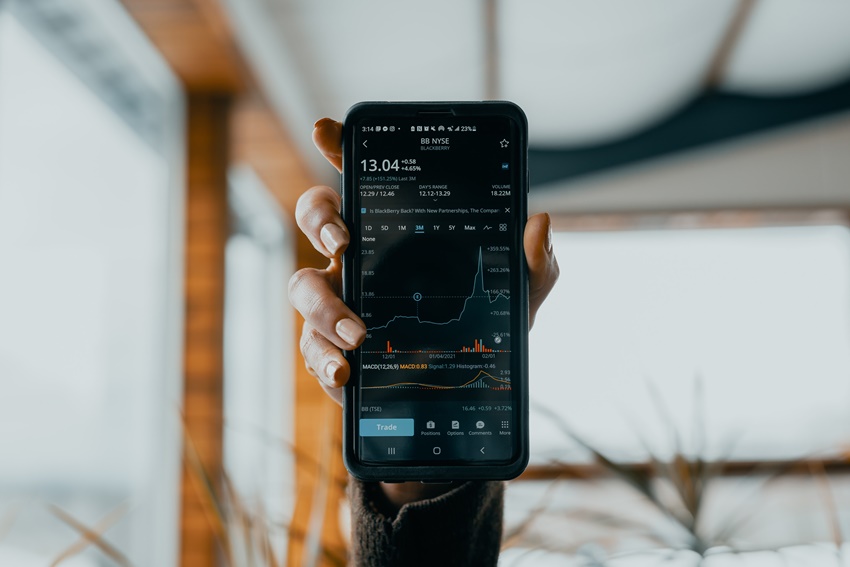Technology has dramatically changed the way we invest today. The current investing landscape has been completely changed when compared to the same industry just 15 years ago. During the 1980s, 1990s, and early 2000s, many investors were limited by how they could invest, what they could invest in and the fees they were forced to endure. Acquiring information and data regarding publically traded companies was quite limited and investors would have had some trouble finding the information required to perform their due diligence. Since technology has been adopted by investors and traders, many elements of investing have been changed for the better, others for the worse.
One of the most important aspects that have changed in the past 20-30 years is the retrieval of information regarding a company’s financials, data, balance sheets, and the latest news. Before the financial tech revolution, many investors who wanted to get important information and company financials had to request them from the company or a stockbroker, at a cost to the investor. Once ordered, the investor would have to wait for the documents that contain the latest information to arrive by mail, which can take several days or weeks.
Investors of all sizes nowadays no longer have to wait days or weeks for the latest information and data. A company’s full set of financial documents are all available on the company’s website at any time and the latest information can be downloaded in minutes. Countless finance based websites are dedicated to presenting the latest corporate news, market news, financial data, statistics, the latest stock price, and stock volume every second during trading hours. Investors of all sizes can trade with the latest information regarding any publically traded company and can change their strategy as soon as new information becomes available to them. They can react to news in real time.
Before the advent of the internet and online brokerages, investors had only one option if they wanted to invest. Individuals were forced to use stockbrokers and financial institutions. Stockbrokers and financial institutions charged investors fees on trades, advice, research, and more, resulting in higher costs for clients. Many of the fees that were once charged by financial institutions no longer exist, resulting in higher profits for investors.
As online brokerages and trading platforms became more prevalent, the use of stockbrokers slowly declined. More and more investors sought to invest via the online platforms and use the platform’s stock database that gave them access to the latest information about companies, data, and statistics. Stock trading and investing are now accessible to everyone.

In 2013, a new fintech startup named Robinhood launched a platform in which traders and investors can use to buy and sell stocks with one major advantage, which was free trades on all stocks no matter the quantity. The fact that a new trading platform had zero fees to trade and zero costs to maintain encouraged individuals of all ages to enter the field of investing, particularly the younger demographic.
The platform was innovative and inviting, with many investors choosing to use Robinhood as their main trading platform instead of paying for each stock transaction. Users of the platform can quickly and safely transfer funds from their bank into their accounts in just a few minutes. The ease of investing and its attraction to the younger demographic brought a significant wave of new traders, who were quite inexperienced with trading and finance in general. These individuals were eager to invest but did not know how nor did they have the experience to invest, which brought on a new wave of educational resources. They still lacked the experience and knowledge to invest, which brought on a new industry for this particular group of individuals, the financial education industry.
Since it has become incredibly easy to start investing in stocks and cryptocurrencies, many websites and video platforms have catered to inexperienced investors. Technology has made it much easier to not only trade but also learn and understand how financial markets work without needing a degree in accounting or finance. Investors are no longer reliant on stockbrokers and advisors for their information and experience. Investors can now become educated on trading and within a few months, if not weeks, become formidable traders. The learning curve for investing has been reduced significantly.
The development of mobile trading platforms made it so investors can buy and sell any stock at a moment’s notice in any location they may be in. This allowed investors to react to the financial news at any time during the day, which was not possible just 15 years ago. Investors are now able to get accurate up to date information regarding all of the positions in their portfolio within seconds. They are also able to make trades 24 hours a day, 7 days a week, regardless of where they may be.
Before the advent of mobile trading, investors who wanted to sell a position had to go in person into the brokerage and speak with a financial representative or they could call during operating hours. Instantly reacting to news is a vital new development in the world of investing, which was unheard of just 15 years ago for retail investors.
Although the emergence of technology in investing has brought the masses and encouraged younger generations to invest, it does have some consequences. One of the main impacts it has created is that financial markets are now more volatile than they were before. The volatility comes due to the increased access to financial information and news, combined with the ease of investing.
The immediate reaction to new information can make many novice traders nervous about the outlook of certain companies or industries and as a result, many liquidate their positions as an automatic response. Before mobile investing, only a handful of investors were able to quickly react to the market due to new information. After mobile investing became widespread, investors of all sizes and experience are now able to sell their positions at a moment’s notice, thus increasing overall market volatility.
This is also not taking into account the rise of cryptocurrencies, a market that has an estimated value of about $1.7 trillion and growing. The rise of mobile platforms also brought on the rise of cryptocurrencies, in which many stocks traders have started to trade alongside traditional stocks. Cryptocurrency markets are even more volatile than stock markets, as there are no safeguards against manipulation and schemes. This has resulted in significant losses to investors.
Technology has greatly changed the investing landscape forever, mostly for the good, but it is not without its detriments. The impact technology has had on investing has been profound. Trading platforms gave retail investors a way to bypass commissions, trade fees, and stockbrokers, while also introducing investing to a new demographic of individuals who were not traditionally targeted by stock brokerages. Investors can now buy and sell any stock, anywhere they please with access to the latest information, all at their fingertips.
Despite the new issues being faced by traders in the market, no one can deny the impact technology has had on investing for professional investors and especially retail investors. Technology and finance are now two industries that are intertwined and investors will continue to see changes in finance as new technology develops. New financial tools, social media, and analytics will continue to change and shape the investing world for the better. At the same time, investors will always adopt and embrace the technological changes brought on to them.
This post was written with Fiverr by Financialquazar. I hire Fiverr writers to write about topics they are proficient in. This allows you and me to learn more. Subscribe for more business, sales and investing posts. Have a lovely day.











